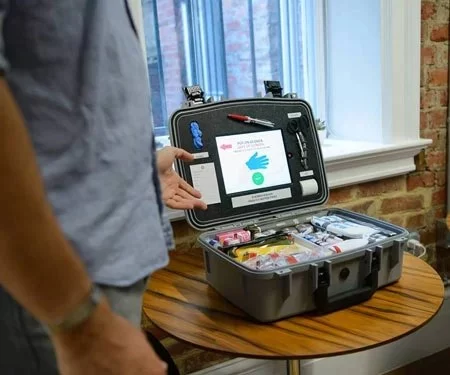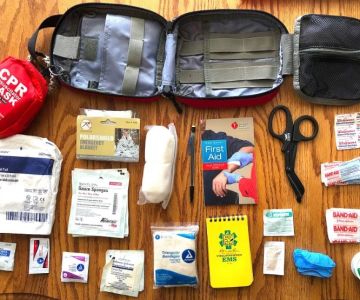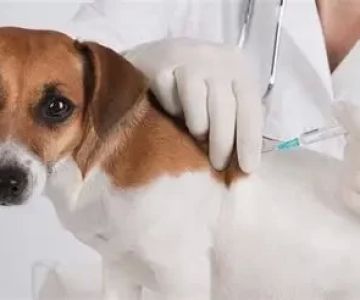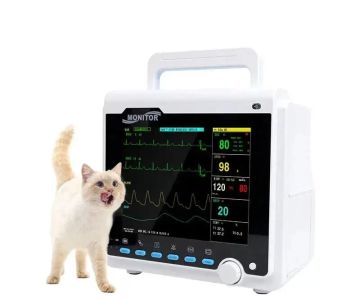- 1-Why a Pet First-Aid Kit is Essential
- 2-Smart Tools Every Pet First-Aid Kit Should Include
- 3-Common Pet Injuries and Emergencies
- 4-How to Use Your Pet First-Aid Kit Effectively
- 5-Real-Life Case Study: Pet First-Aid in Action
- 6-Conclusion: Ensuring Pet Health and Safety
1. Why a Pet First-Aid Kit is Essential
As a pet owner, you understand that accidents can happen at any time. Whether it’s a minor scrape, a sudden allergic reaction, or a more serious emergency, having a well-stocked and organized first-aid kit for your pet is vital. A pet first-aid kit ensures that you can respond quickly and effectively in an emergency, minimizing the risk of further injury or health complications. More importantly, being prepared can make a huge difference in how fast your pet recovers, making it an indispensable part of your pet care routine.
2. Smart Tools Every Pet First-Aid Kit Should Include
Building a pet first-aid kit isn't just about the basics like bandages and antiseptic wipes. With the advancement of pet care tools, many smart gadgets are now available to enhance the effectiveness of your kit. Here are some essential smart tools every pet first-aid kit should have:
- Smart Thermometer: A digital thermometer designed for pets allows you to accurately measure your pet’s temperature. It’s especially useful for detecting fever, a common sign of illness or infection.
- Pet Pulse Oximeter: This small device helps measure oxygen levels in your pet’s blood, which can be critical in emergencies like choking, respiratory distress, or shock.
- Automatic Pet First-Aid Guide: Some advanced kits come with smart apps that guide you step-by-step through first-aid procedures specific to your pet’s breed and size, helping you stay calm and informed during emergencies.
- Pet First-Aid Manual: While not a smart tool, a comprehensive first-aid manual or quick reference guide that includes pet-specific emergencies is crucial for any pet owner.
- Portable Pet Water Dispenser: A collapsible, portable water dispenser can be invaluable if your pet is dehydrated after a heatstroke, injury, or long travel.
3. Common Pet Injuries and Emergencies
Pets are naturally curious and often find themselves in situations where injury is possible. Here are a few common injuries and emergencies where having a first-aid kit ready could help you act quickly:
- Cuts and Scrapes: Minor injuries like cuts, abrasions, and scrapes can easily happen during playtime or outdoor adventures. Having bandages and antiseptic to clean the wound can prevent infections.
- Insect Stings or Bites: Insect stings or bites can cause allergic reactions, swelling, or discomfort. A pet first-aid kit should include antihistamines (approved by your vet) and ice packs for cooling down affected areas.
- Choking: Pets, especially dogs, can sometimes choke on small objects. Having the knowledge and tools to perform the Heimlich maneuver for pets can save their lives.
- Heatstroke: Pets can suffer from heatstroke, especially during hot weather. Ensure your kit has cooling aids, including cool compresses and a water dispenser to help bring their body temperature down.
- Poisoning: Whether it’s eating a toxic plant, food, or chemical, poisoning is a serious concern. Keep emergency contact information for your vet or animal poison control hotline in your kit.
4. How to Use Your Pet First-Aid Kit Effectively
Simply owning a pet first-aid kit isn't enough – knowing how to use it efficiently is key to ensuring your pet’s safety. Here’s how to make the most of your kit:
- Stay Calm: In any emergency, your first step should be to stay calm. Your pet can sense your anxiety, which may make them more stressed.
- Assess the Situation: Carefully evaluate the severity of the injury or condition. If it’s a minor injury, you may be able to treat it yourself. For serious emergencies, contact your vet immediately.
- Use the Right Tools: Be familiar with the tools in your kit, like how to use the smart thermometer or pulse oximeter to assess your pet’s condition.
- Seek Professional Help: When in doubt, seek professional veterinary help, especially for serious or life-threatening injuries. Your first-aid kit is meant to stabilize the situation until you can get to a vet.
5. Real-Life Case Study: Pet First-Aid in Action
Let’s take a look at a real-life example of how a pet first-aid kit helped save a pet’s life. Sarah, a dog owner from Brooklyn, had a small first-aid kit in her home, but it wasn’t until one day when her dog, Daisy, ate a potentially toxic plant in the backyard that it proved invaluable. Daisy started to show signs of distress, including vomiting and drooling excessively. Sarah quickly referred to the first-aid guide in her kit and gave Daisy a dose of activated charcoal (as recommended by her vet beforehand). She then rushed Daisy to the emergency vet, where she was treated successfully. Sarah’s preparation with a well-stocked first-aid kit made a huge difference in ensuring Daisy’s health and safety.
6. Conclusion: Ensuring Pet Health and Safety
Building a home first-aid kit with smart tools for your pet is a smart investment in your pet’s health and safety. It’s a proactive measure that can make all the difference in an emergency. A well-organized, carefully curated first-aid kit with the right tools ensures that you are prepared for common pet injuries and emergencies. Always remember, while having a first-aid kit is important, knowing how to use it effectively and seeking professional help when necessary are key to your pet’s well-being.
If you’re looking for expert veterinary services and top-quality pet care products, visit Hidden Brook Veterinary. Our team is dedicated to providing the best care for your pets and helping you stay prepared for any health situation.












